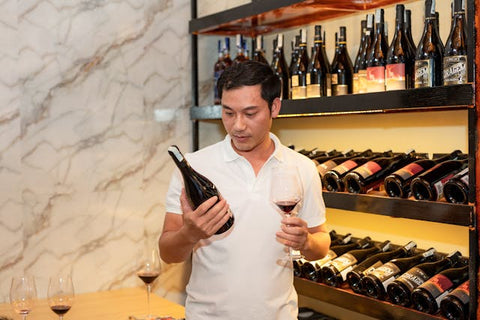As wine retailers, we've noticed that customers really care about vintage—even when it might not matter much. When it comes to buying wine, one of the first things many customers check is the vintage—the year the grapes were harvested. For collectors and connoisseurs, the vintage can be a critical factor, signaling the quality and character of a wine. But what about wines under $20 like 14 Hands Hot to Trot Smooth Red Blend or Michael David Freakshow Cabernet Sauvignon? Eye-roll. Does the vintage really matter at this price point, or could it actually be a source of confusion and unnecessary concern for consumers? Let’s explore the idea of making all wines under $20 non-vintage and how it might benefit both retailers and customers.
The Vintage Dilemma: Perception vs. Reality
For many consumers, the term "vintage" carries a certain prestige. It’s often associated with higher-end wines and the idea that some years produce better wines than others due to varying weather conditions and other factors. However, when it comes to wines priced under $20, this perception can be misleading.
At this price point, winemakers typically focus on producing consistent, enjoyable wines that deliver good value rather than emphasizing the nuances of a particular year. The goal is to create a wine that tastes great and is reliable from bottle to bottle, regardless of the vintage. However, the presence of a vintage year on the label can sometimes lead consumers to overanalyze or even dismiss a perfectly good wine simply because they believe the vintage is less desirable.
Why Non-Vintage Wines Make Sense
Non-vintage (NV) wines are blends of grapes from multiple harvests, allowing winemakers to create a consistent flavor profile each year. By blending different vintages, they can balance out any variations that might occur due to weather, ensuring that the wine remains consistent in taste and quality.
For wines under $20, this approach makes a lot of sense. Here’s why:
1. Consistency: Non-vintage wines allow winemakers to deliver a reliable product year after year. Customers can trust that the wine they enjoyed last month will taste just as good the next time they purchase it, without worrying about the effects of a particular vintage.
2. Simplicity: Removing the vintage from the equation simplifies the buying process for consumers. They can focus on the brand and the style of wine they enjoy, rather than getting bogged down in concerns about whether the 2019 vintage is better than the 2020.
3. Affordability: By focusing on blending and consistency, winemakers can keep production costs down, which helps maintain the wine’s affordability. This is particularly important for wines in the under $20 category, where price sensitivity is often a key factor for consumers.
4. Retailer Benefits: For retailers, selling non-vintage wines can reduce the need to explain and justify the differences between vintages to customers who may not be familiar with wine terminology. This can streamline the sales process and make it easier to recommend wines that customers will enjoy.
Addressing Customer Concerns
Of course, some customers might initially be hesitant about purchasing a non-vintage wine, especially if they’re used to looking for specific years. Education is key here. Retailers can help by explaining that non-vintage wines are crafted for consistency and quality, offering a reliable and enjoyable experience each time.
In fact, many well-respected sparkling wines, such as Champagne, are traditionally non-vintage, which is often seen as a mark of quality and consistency. By drawing this parallel, retailers can reassure customers that a non-vintage wine isn’t a step down, but rather a smart choice for everyday drinking. Bollinger is a great example.
A Win-Win for Everyone
Shifting to non-vintage wines for bottles under $20 could be a win-win for both retailers and consumers. It simplifies the buying process, ensures consistency, and keeps prices affordable—all without sacrificing quality. By focusing on what really matters—the taste and enjoyment of the wine—both retailers and customers can benefit from a more straightforward and satisfying wine-buying experience.
So, next time you’re browsing the wine aisle, don’t be put off by a non-vintage label. It might just be the key to finding your new favorite everyday wine.




Comments (0)
There are no comments for this article. Be the first one to leave a message!